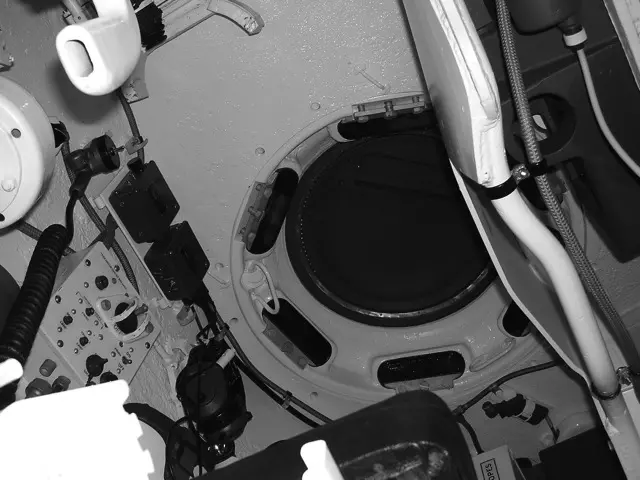
The Crew and Their Bond with the Sherman Tank
Tankers faced a different set of challenges than regular infantry soldiers during World War II. This article delves into the lives of the Sherman tank crews, their responsibilities, and the daily routine they followed.
The crews developed a deep affection for their tanks. The tank provided them with a sense of protection from the dangers that lurked around them. When artillery fire rained down, the tankers could simply close their hatches, shielding themselves from harm. Unlike infantry soldiers who had to seek cover from machine guns, grenades, and other deadly weapons, tankers had a higher chance of survival.
 Caption: M4A3(76) 31st Tank Battalion 7th Armored Division
Caption: M4A3(76) 31st Tank Battalion 7th Armored Division
Drills: Second Nature Under Fire
Tank crews underwent rigorous training to ensure efficiency in combat situations. Each crew member had specific responsibilities and tasks to master. This training involved constant drilling, practicing the same actions over and over until they became second nature.

The purpose of these drills was to familiarize the crew with their tanks and ensure they could operate them effectively even during intense battles. Standardized commands allowed crew members to adapt quickly to different tanks and crews, promoting seamless coordination.
Responsibilities of Each Crew Member
The Sherman tank crew consisted of five individuals, each with a vital role to play:
Commander: The Leader and Protector
The commander was responsible for commanding the tank, receiving orders from higher-ranking officers, and ensuring the crew's well-being. He controlled the tank's movements and communicated with other tanks through the radio.

Gunner: The Marksman behind the Gun
The gunner operated the tank's main gun and machine gun. He aimed and fired these weapons under the direction of the commander. The gunner needed exceptional accuracy and quick reflexes, often engaging multiple targets in short periods.
Loader: Feeding the Hungry Beast
The loader's role involved supplying ammunition for the main gun and machine gun. Upon receiving the order to fire, the loader loaded the ammunition, ensuring the gunner was ready to engage. He also assisted in maintaining the tank's armament.
Driver: The Man Behind the Wheel
The driver, located in the front of the tank, controlled its movement. He had to navigate the terrain while relying on the commander's directions. The driver played a critical role in the tank's mobility and safety.
Co-driver: The Assistant to the Crew
The co-driver provided additional support to the crew, assisting the loader, and operating a machine gun. He also helped with maintenance tasks and performed other duties assigned by the commander.
 Caption: A Sherman tank crew performing their duties
Caption: A Sherman tank crew performing their duties
Living with the Beast: Home in the Tank
The tank crew experienced a unique living situation. They spent most of their time inside the tank, which became their home. Daily life involved maintaining the tank, completing daily chores, and ensuring the tank was ready for battle.

The crew dedicated significant effort to maintaining the tank's functionality, including checking track tension, adjusting bolts, and conducting routine maintenance. Additionally, they had to manage their personal needs, such as eating and sleeping, often multitasking while working on the tank.
The Pacific Theater: A Different Experience
In the Pacific Theater, tank crews faced unique challenges. The tropical climate presented extreme heat and humidity, adding to the discomfort inside the tank. Malaria and other diseases posed additional threats to the crew's health.
Combat in the Pacific also had distinct characteristics. Tankers rarely received significant training opportunities before battles, and supply challenges were more prevalent. The main threats to Sherman tanks came from anti-tank guns, artillery fire, mines, and Japanese suicide squads.
 Caption: M4 tank decorated with additional equipment for combat in the Philippines
Caption: M4 tank decorated with additional equipment for combat in the Philippines
Conclusion
Despite the challenges they faced, Sherman tank crews developed a deep camaraderie with their tanks. They adapted to their surroundings, overcoming obstacles to fulfill their crucial roles in combat.
The tankers' dedication and skill were invaluable assets to the Allied forces, and their contribution played a significant role in achieving victory in World War II.
Sources: Armored Thunderbolt by Zaloga, Yeide’s TD and two separate tank battalion books, Sherman by Hunnicutt, Combat Lessons, The Rank and file, what they do and how they are doing it 1-7, and 9. Archive Awareness, Oscar Gilberts, Marine Tank Battles in the Pacific, M4 Sherman tank at war by Green, Tanks are a Might Fine Thing by Stout, the Lone Sentry, TM9-731b, TM9-752, TM9-754, TM9-759

















